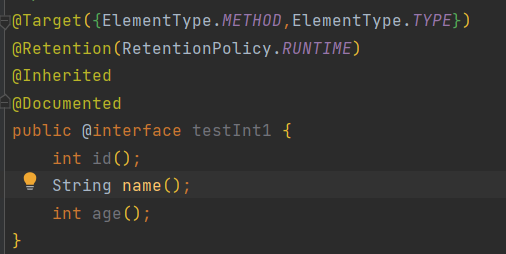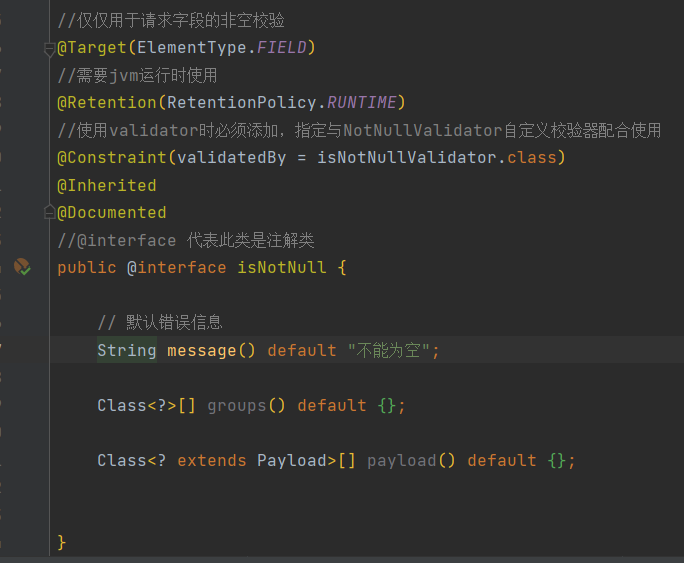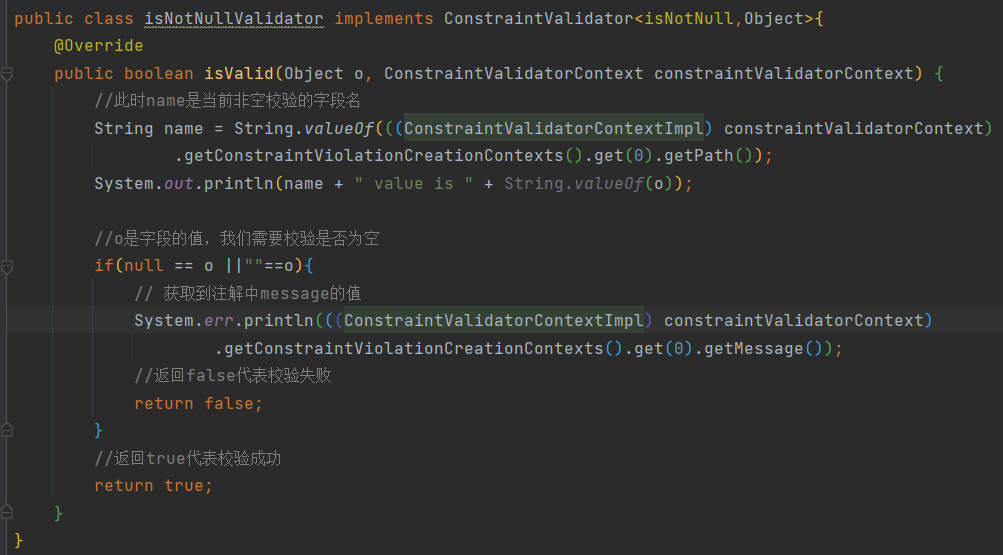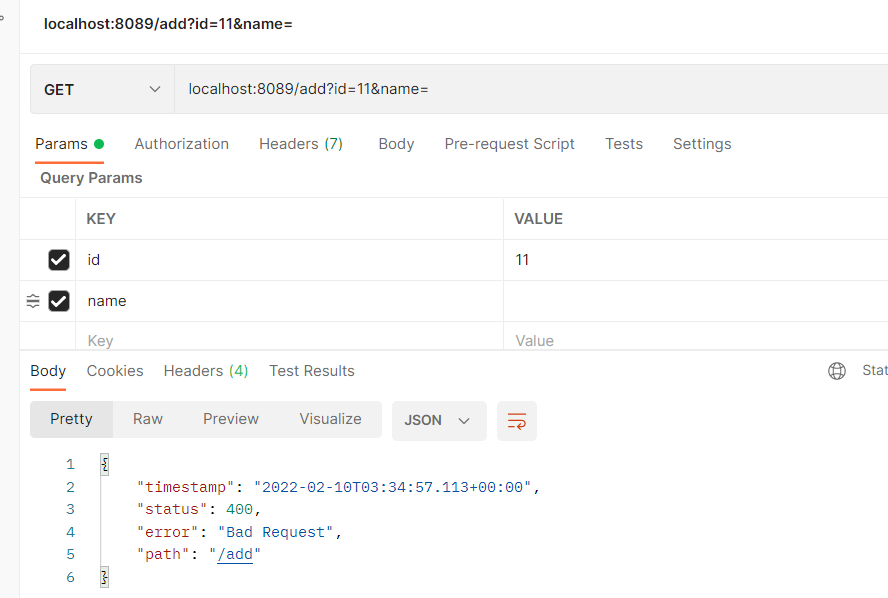自定义注解
1、注解
注解是 java 这一门编程语言中很重要的一个知识点,利用注解,我们可以很方便实现很多功能。
它可以用于创建文档,跟踪代码中的依赖性,甚至执行基本编译时检查。
注解不会影响代码的正常运行,他与我们的代码处于两个时空中,但是注解和我们的代码又在某些方面相互影响。
java 中,所有的注解都继承了 Annotation 接口。
java 中,已经预定义了很多注解,以方便我们的使用,我们可以在编程过程中直接对这些注解进行调用,实现我们所需要的功能。
以下列出了一些平时会用到的注解:
1.1、基础注解
@Override:
表示该方法是重写的方法。@Deprecated:
表示该方法是过时的方法,我们在一些旧版本的 API 文档中警方会看到这个注解。
1.2、元注解
在我们自定义注解的过程中,就会使用到这些元注解,它可以帮助我们构建自己的自定义注解,就是用在注解中的注解。
@Target:
表示该注解可以被放在哪个位置。
它的参数类型如下所示:
1 | ElementType.TYPE:能修饰类、接口或枚举类型 |
@Retention:
用于声明生命周期。
参数类型如下所示:
1 | RetentionPolicy.SOURCE:源码阶段 |
@Inherited:
表示注解可以被子类继承。即子类继承父类以后,也可以继承父类的注解。
@Documented:
表示生成 API 。
@Repeatable:
表示注解在同一个地方可以出现多次,如果不加这个注解的话,同一个地方注解只能出现一次。
2、自定义注解
对于自定义注解,说起来其实十分简单,用@interface修饰一个我们所创建的“类”,然后再加上我们需要的一些元注解,就可以实现一个自定义注解了。
对于创建的自定义注解,我们需要考虑以下几个问题:
- 注解用在什么地方?
- 注解什么时候使用?
- 注解想要实现什么功能?
在考虑好上面的这些问题之后,通过合理使用元注解,我们就能解决以上的一些问题。
可以说自定义注解和元注解之间的关系密不可分!就比如说盖楼时我们必须打地基一样。
自定义注解可以有很多种形式,以下是几个自定义注解的例子。
2.1、自定义注解可以存放变量
首先我们创建一个以下的自定义注解:
可以看出来,这个自定义注解中有三个变量,分别是id,name,age。
别处通过注解,可以很方便的使用它们。
当我们创建一个类,标上这个注解的时候,他会提示我们所需要的三个变量:
此时我们输入所需元素:
如果我们想拿到注解中我们设置好的结果,通过以下的方法即可拿到:
2.2、自定义注解实现某个功能
上面的用法通常不太常见,我们更多所见到的,是通过注解来实现某个功能,所以下面就是一个这样的例子。
因为参数校验是位于业务逻辑执行执行,可以考虑将其拆分。
所以这个注解可以简单实现检验一个参数是否为空等检验功能。
由于并不是所有的方法,都需要校验(某些方法允许空参数),所以考虑使用自定义注解,让开发者进行灵活控制。
首先创建以下的一个注解:
然后是注解用于检验的类
然后在需要验证的字段上添加上这个注解
最后创建一个控制器类,来检验我们的代码
当我们标注的 name 字段有值的时候,可以正常返回信息
而当值为空的时候,则会出现错误,后台会提示具体的错误信息

以上就是一个验证字段是否为空的自定义注解的例子。
3、附录
testInt1:
1 | import java.lang.annotation.*; |
l1:
1 | /** |
isNotNull:
1 | //仅仅用于请求字段的非空校验 |
isNotNullValidator:
1 | public class isNotNullValidator implements ConstraintValidator<isNotNull,Object>{ |
Users:
1 |
|
TestController:
1 |
|










